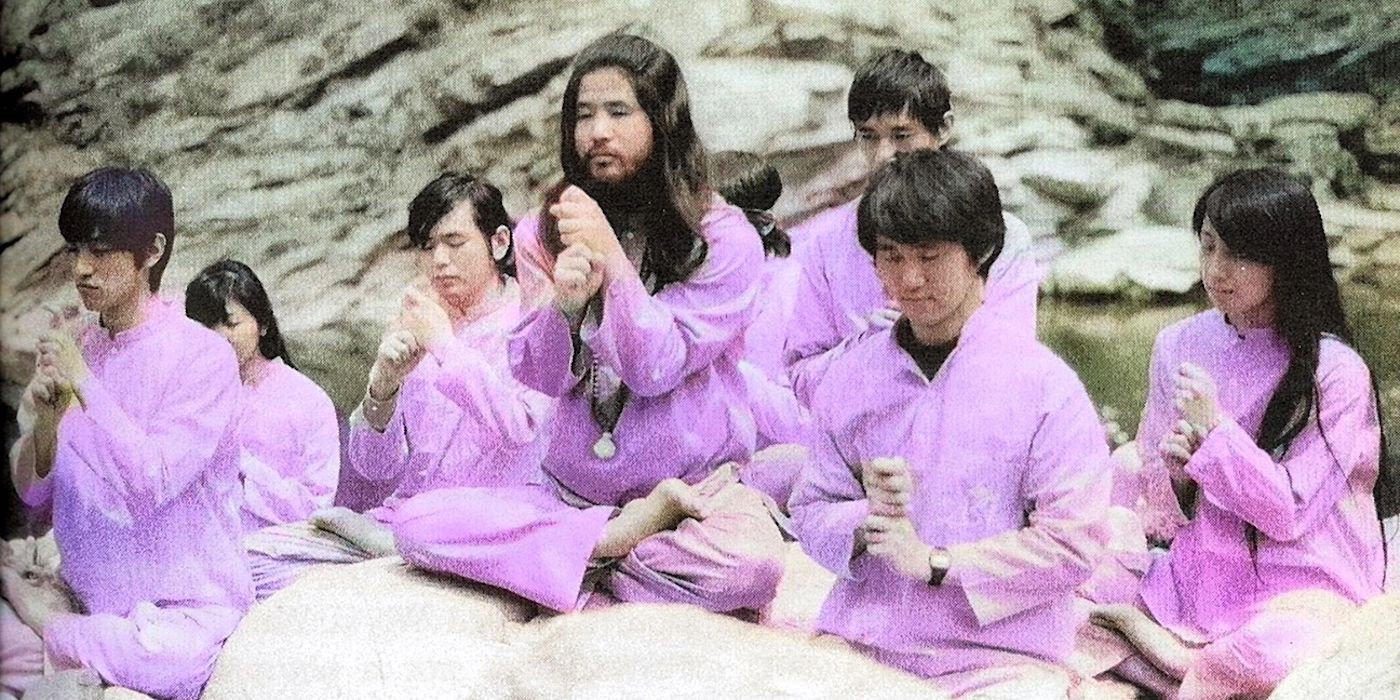When it comes to true crime documentaries, cult documentaries are a well-loved subgenre. From NXIVM to the Rajneeshpuram to Jonestown, cults are fascinating to people because of their ability to lure in large groups of people to follow a lifestyle and a set of rules that most of us would find restrictive and bizarre. In that respect, the Aum Shinrikyo cult shouldn't feel that different from the other cult stories. Directed by Ben Braun and Chiaki Yanagimoto, AUM: The Cult at the End of the World follows the doomsday cult from its inception in 1984 to the 1995 sarin gas attack on the Tokyo subway system that killed 14 and left approximately 6,000 civilians injured.
Like other cult documentaries, AUM breaks down the formulation of the cult through its enigmatic leader Shoko Asahara. We hear from journalists David E. Kaplan and Andrew Marshall, who wrote the book the documentary is based on, The Cult at the End of the World: The Incredible Story of Aum, as well as many of the officials, families, and investigators involved in uncovering the truth about Aum. On top of that, we hear from Fumihiro Joyu, the silver-tongued former spokesperson and public relations manager of Aum who not only managed to escape capture by the police but continues to lead the cult Hikari no Wa today, an offshoot of Aum.
As far as cult documentaries go, Aum follows a familiar template. We learn about the cult's practices, its leader, its history, the point at which things went wrong, and how the mistakes and missteps from law enforcement allowed Aum to slip under the radar. Anyone who has an interest in cults and true crime will find this story intriguing simply by being presented with the facts. It's impossible not to be drawn in by the story of this tragedy.
However, nothing really sets Aum apart from other crime docs. It doesn't spend enough time focusing on the crimes of the cult, one of them involving the devastating and brutal murder of a lawyer, his wife, and his infant son. It details the creation and formulation of the sarin gas that killed and injured the people of Tokyo. It doesn't spend enough time damning Joyu for his role as one of the highest-ranking members in Aum. In fact, after the svelte 106-minute feature, it feels like we've just scratched the surface of the story of Aum.
In an age of miniseries dedicated to every aspect of exposing the horrors and realities of a cult, AUM: The Cult at the End of the World feels lacking. It is trying to give a comprehensive look at something that requires far more detail and nuance. Near the end of the documentary, it is revealed that Asahara, the leader, was executed alongside 12 followers following the sarin gas attack. And one pundit speaks about how that was 12 people too many, mentioning for the first time in the documentary the fact that those followers are also the victim of Asahara's cult of personality. Too often, people forget that the followers of a cult are the first victims. It's an aspect that is barely touched on, and we aren't exposed to many ex-followers who have come out the other side recognizing their part in the violence.
Similarly, the access to Joyu makes you wonder why the documentary seems to frame the man as just another bystander when he is clearly one of the ringleaders and likely knows the truth about many of the crimes committed by the cult. The fact that the group killed a number of its own members and cremated them is a point that is completely glossed over. With more time and focus, Aum could have been the next hit series bought by a streamer, but as it is now, it doesn't dig deep enough and leaves an incomplete narrative about this deadly cult.
Rating: C


